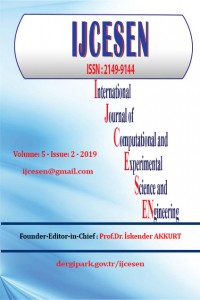Abstract
References
- [1] Steere AC (1989) Lyme disease. N Engl J Med 321: 586–596.
- [2] Hilbi H, Jarraud S, Hartland E, Buchrieser C (2010) Update on Legionnaires’ disease: pathogenesis, epidemiology, detection and control. Mol Microbiol 76: 1–11.
- [3] Taff ML, Siegal FP, Geller SA. Outbreak of an acquired immunodeficiency syndrome associated with opportunistic infections and Kaposi's sarcoma in male homosexuals. Am. J.Forensic Med.Pathol. 1982 Sep.3(3):259-64.
- [4] Zuckerman AJ. The Elusive Hepatitis C Virus. BMJ. 1989 Oct 7;299(6704):871-3.
- [5] Drosten C, Günther S, Preiser W, van der Werf S, Brodt HR, Becker S, Rabenau, H, Panning M, Kolesnikova L, Fouchier RA, Berger A, Burguière AM, Cinatl J,Eickmann M, Escriou N, Grywna K, Kramme S, Manuguerra JC, Müller S, Rickerts V, Stürmer M, Vieth S, Klenk HD, Osterhaus AD, Schmitz H, Doerr HW. Identification of a Novel Coronavirus in Patients with Severe Acute Respiratory Syndrome, N Engl J Med. 2003 May 15;348(20):1967-76. Epub 2003 Apr 10.
- [6] Masuda N, Holme P. Predicting and controlling infectious disease epidemics using temporal networks. F1000Prime Rep. 2013;5:6. doi: 10.12703/P5-6. Epub 2013 Mar 4.
- [7] Lih-Ing W. Roeger. Dynamically Consistent Discrete-Time SI and SIS Epidemic Models, Discrete and Continuous Dynamical systems, supplement,653-662, 2013.
- [8] Keeling MJ, Rohani P: Modeling Infectious Diseases in Humans and Animals. Princeton: Princeton University Press; 2007.
- [9] www.thsk.gov.tr/component/k2/zoonotik-ve-vektorel-hastaliklar-daire-baskanligi-istatiksel- verileri.html
- [10] www.thsk.gov.tr/component/k2/tuberkuloz-daire-baskanligi-istatiksel-verileri.html
- [11] www.thsk.gov.tr/component/k2/asi-ile-onlenebilir-hastaliklar-daire-baskanligi-istatiksel-verileri.html
- [12] Ergen K., Çilli A. and Yahnioğlu N., Predicting Epidemic Diseases using Mathematical Modelling of SIR,DOI:10.12693/APhysPolA.128.B-273.
Abstract
Mathematical models can give us
information on number of cases, deaths caused by infectious diseases. In this
study, we aimed to predict the effects of Crimean-Congo Hemorrhagic Fever
(CCHF), tuberculosis (TB), measles for Turkey and the efficiency of SI and SIS
mathematical models were defined in the
prediction of the number of infected people for these diseases. In CCHF,
predictions for 2014 gave 0% error in both models. As for TB, SIS model
predicted the exact number and SI model predicted a few more cases than that of
SIS model. Again SI and SIS models gave the exact values for measles. According
to these predictions it seems that CCHF and TB cases will continue to increase
slightly while measles cases will approach zero.
These models can predict exact numbers
for each year, in a long term and in normal conditions (unless there are
external parameters such as natural disaster, war, emigration and terrorism )
they can predict the trend for the diseases and can tell when to disappear.
Therefore, updating data are of importance to achieve the powerful prediction.
Keywords
References
- [1] Steere AC (1989) Lyme disease. N Engl J Med 321: 586–596.
- [2] Hilbi H, Jarraud S, Hartland E, Buchrieser C (2010) Update on Legionnaires’ disease: pathogenesis, epidemiology, detection and control. Mol Microbiol 76: 1–11.
- [3] Taff ML, Siegal FP, Geller SA. Outbreak of an acquired immunodeficiency syndrome associated with opportunistic infections and Kaposi's sarcoma in male homosexuals. Am. J.Forensic Med.Pathol. 1982 Sep.3(3):259-64.
- [4] Zuckerman AJ. The Elusive Hepatitis C Virus. BMJ. 1989 Oct 7;299(6704):871-3.
- [5] Drosten C, Günther S, Preiser W, van der Werf S, Brodt HR, Becker S, Rabenau, H, Panning M, Kolesnikova L, Fouchier RA, Berger A, Burguière AM, Cinatl J,Eickmann M, Escriou N, Grywna K, Kramme S, Manuguerra JC, Müller S, Rickerts V, Stürmer M, Vieth S, Klenk HD, Osterhaus AD, Schmitz H, Doerr HW. Identification of a Novel Coronavirus in Patients with Severe Acute Respiratory Syndrome, N Engl J Med. 2003 May 15;348(20):1967-76. Epub 2003 Apr 10.
- [6] Masuda N, Holme P. Predicting and controlling infectious disease epidemics using temporal networks. F1000Prime Rep. 2013;5:6. doi: 10.12703/P5-6. Epub 2013 Mar 4.
- [7] Lih-Ing W. Roeger. Dynamically Consistent Discrete-Time SI and SIS Epidemic Models, Discrete and Continuous Dynamical systems, supplement,653-662, 2013.
- [8] Keeling MJ, Rohani P: Modeling Infectious Diseases in Humans and Animals. Princeton: Princeton University Press; 2007.
- [9] www.thsk.gov.tr/component/k2/zoonotik-ve-vektorel-hastaliklar-daire-baskanligi-istatiksel- verileri.html
- [10] www.thsk.gov.tr/component/k2/tuberkuloz-daire-baskanligi-istatiksel-verileri.html
- [11] www.thsk.gov.tr/component/k2/asi-ile-onlenebilir-hastaliklar-daire-baskanligi-istatiksel-verileri.html
- [12] Ergen K., Çilli A. and Yahnioğlu N., Predicting Epidemic Diseases using Mathematical Modelling of SIR,DOI:10.12693/APhysPolA.128.B-273.
Details
| Primary Language | English |
|---|---|
| Journal Section | Research Articles |
| Authors | |
| Publication Date | July 31, 2019 |
| Submission Date | March 20, 2019 |
| Acceptance Date | July 15, 2019 |
| Published in Issue | Year 2019 Volume: 5 Issue: 2 |


